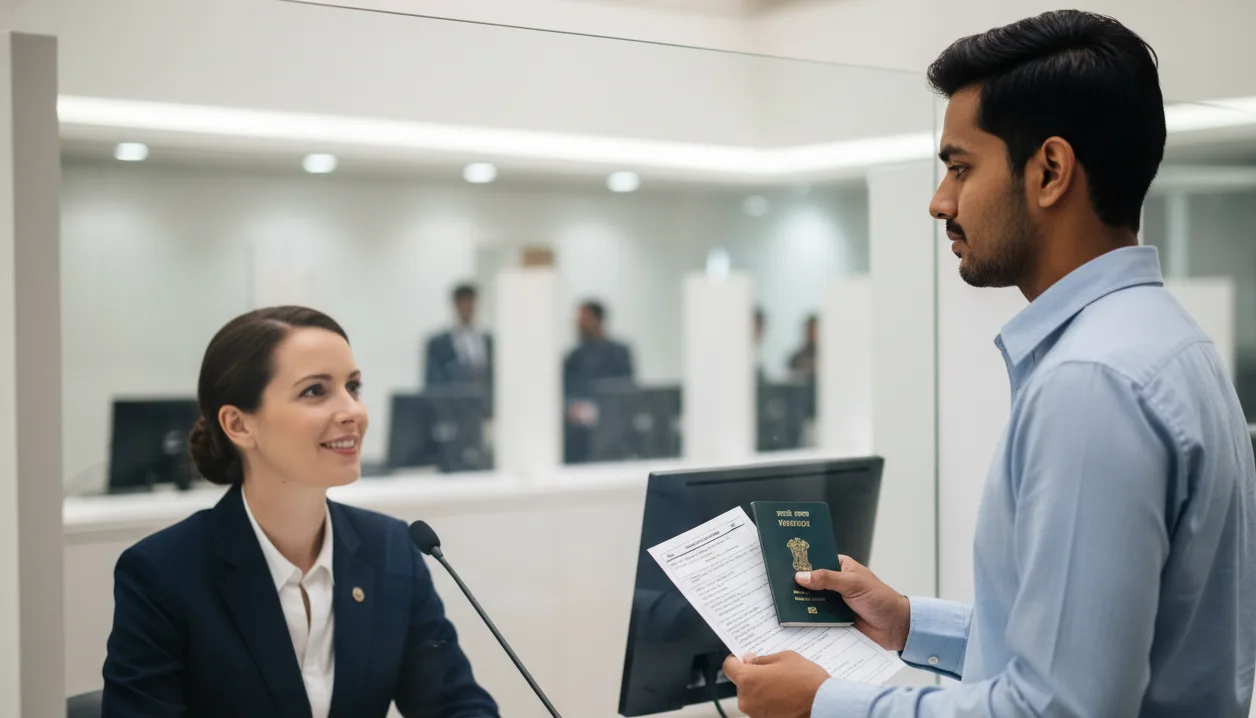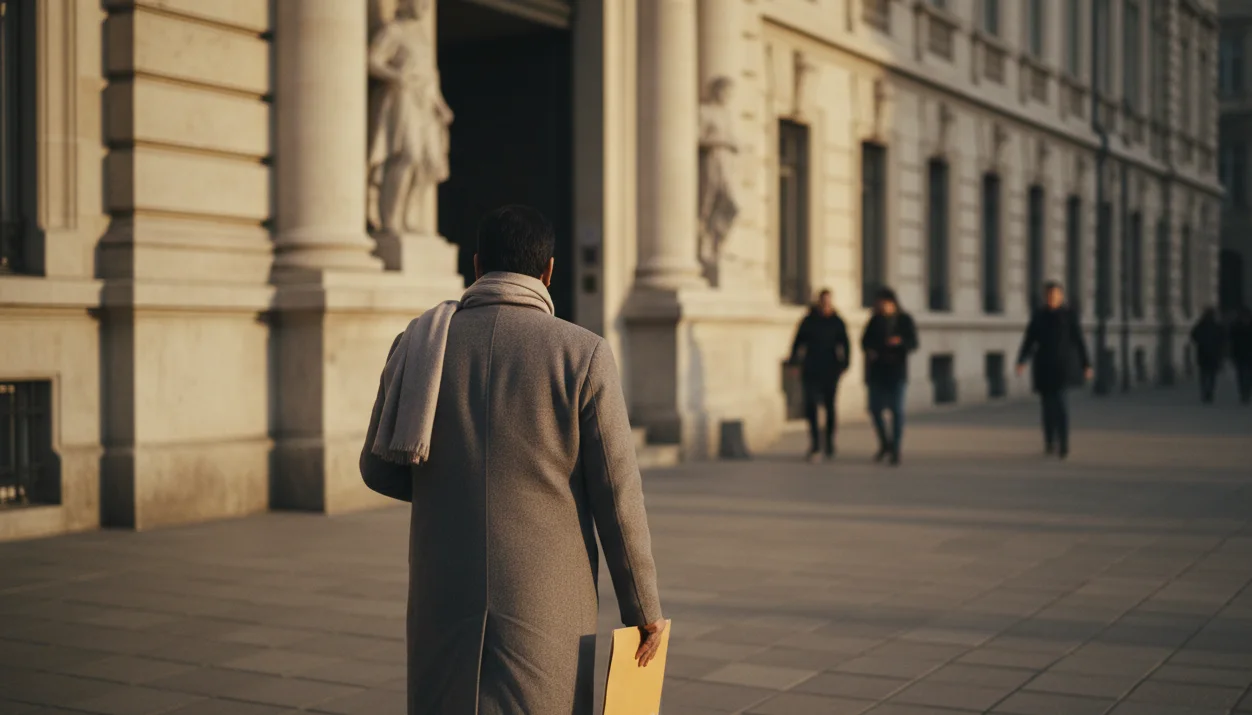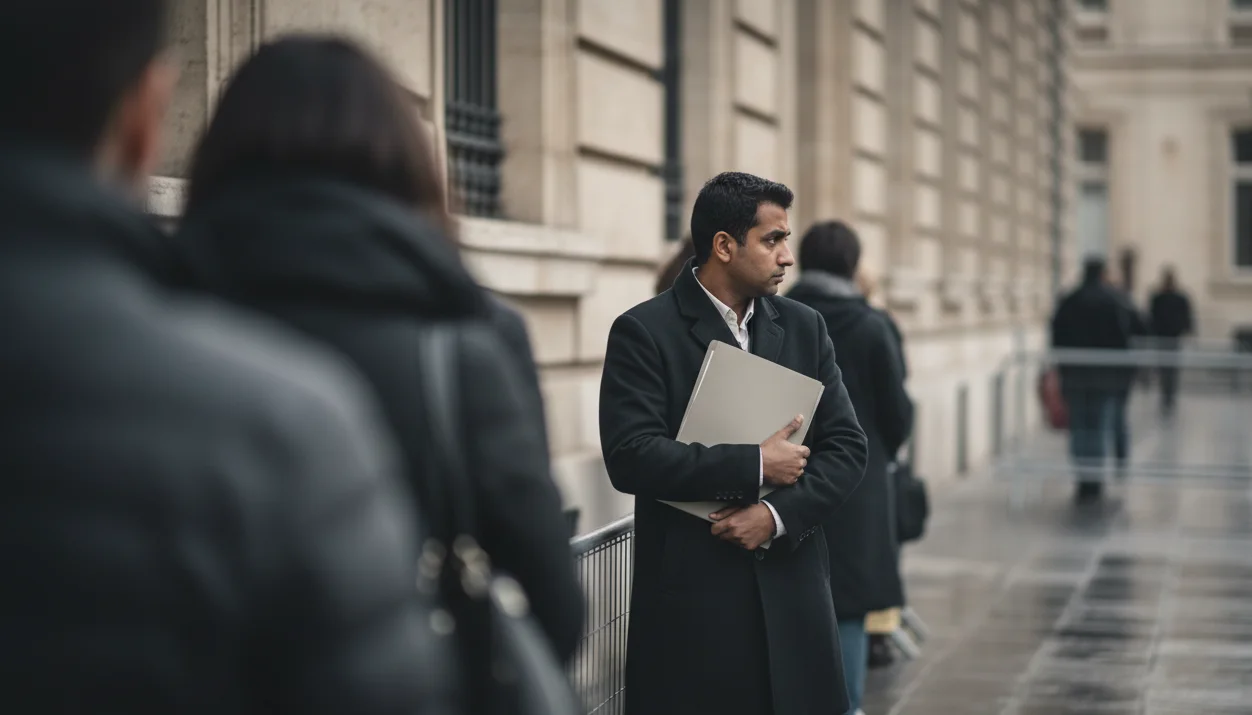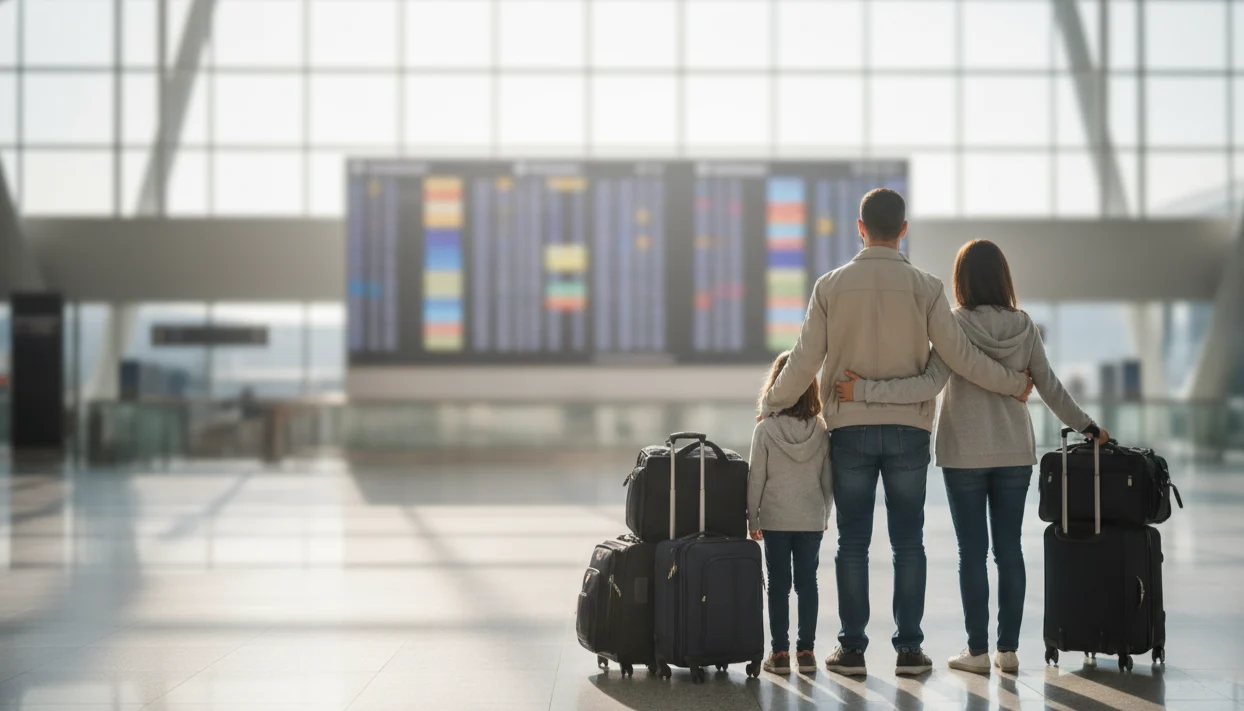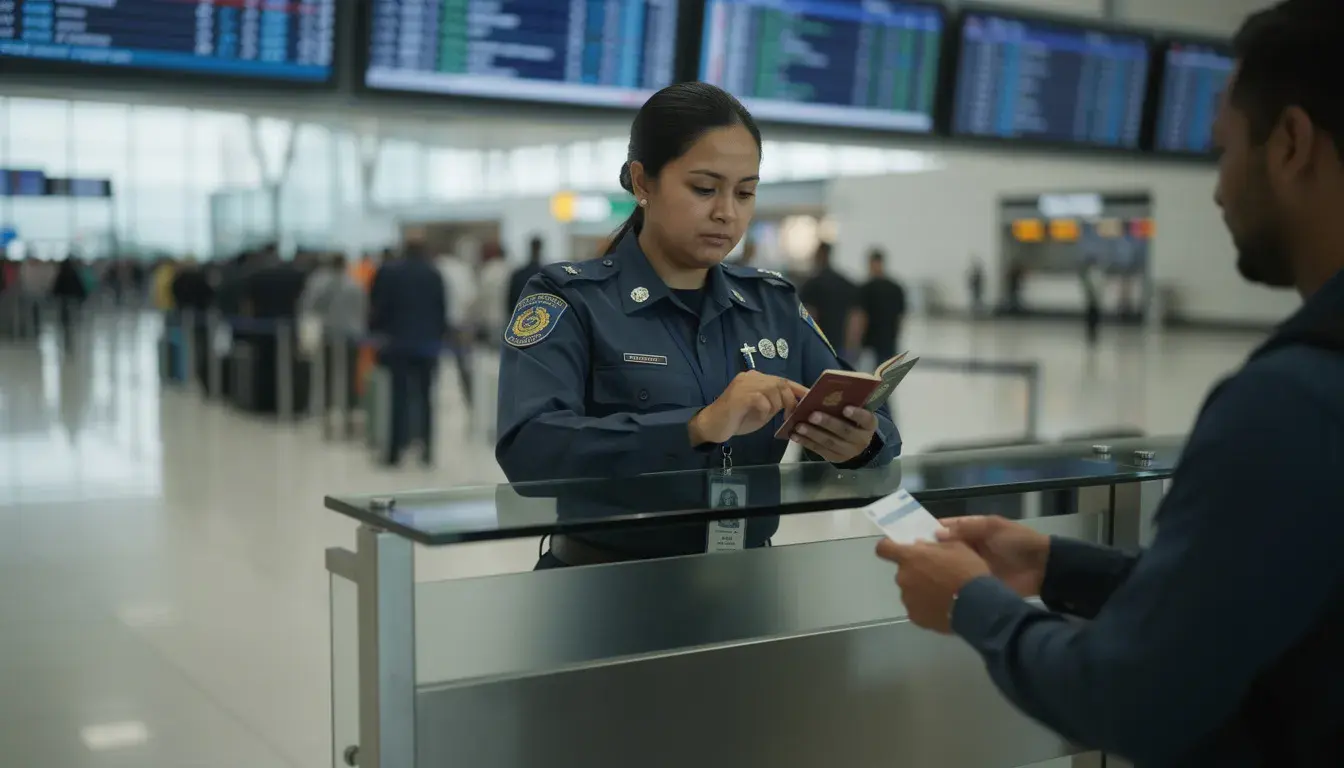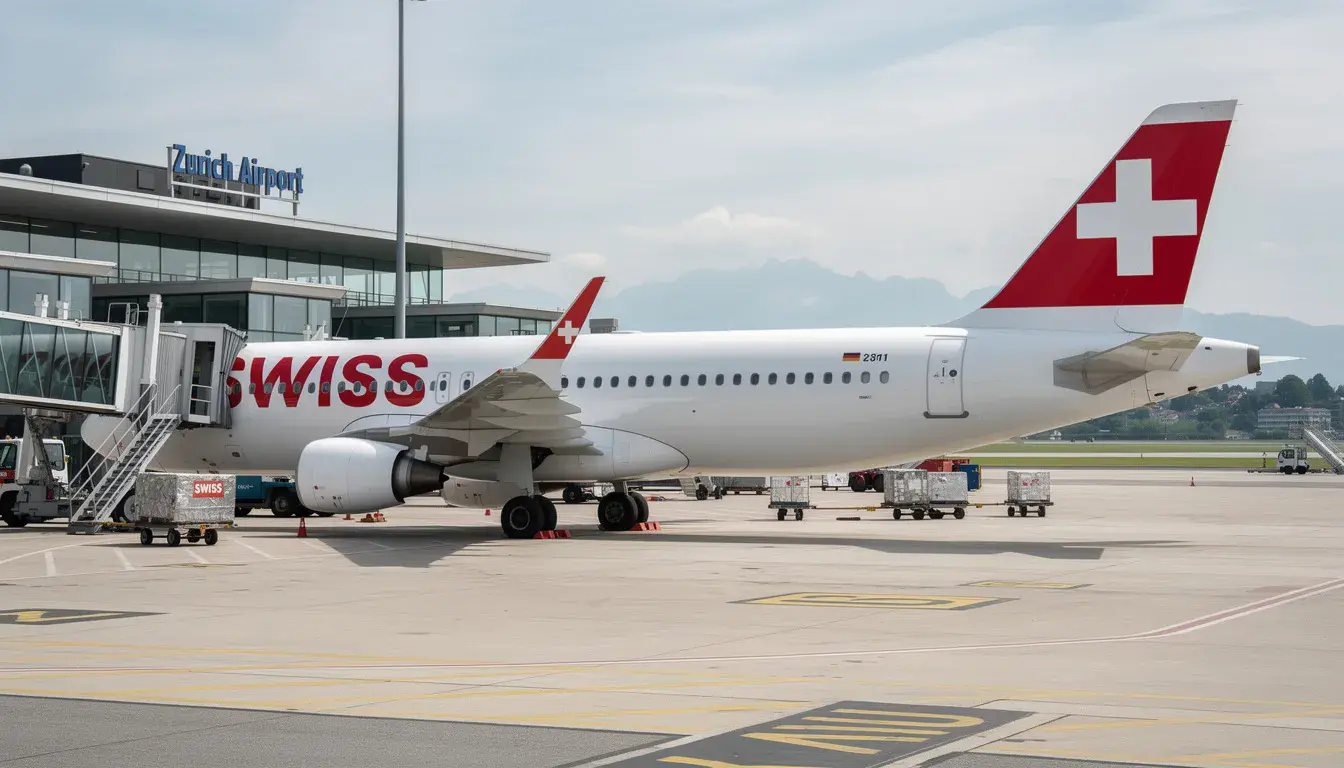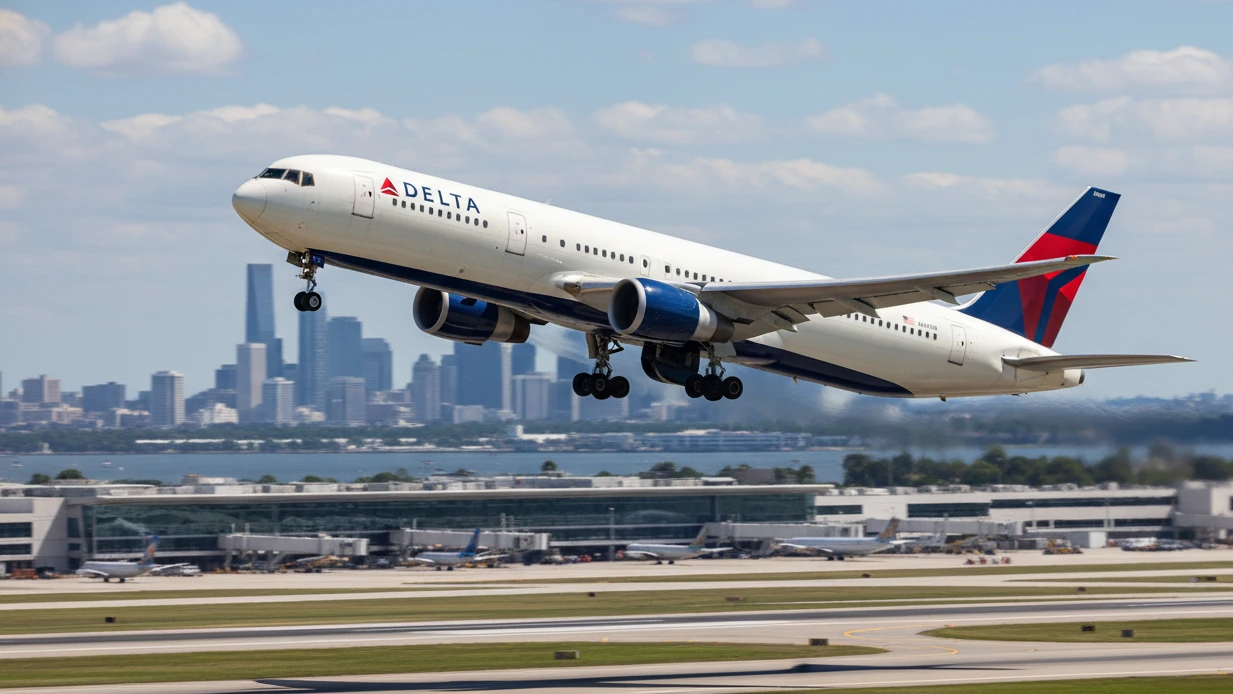Do You Need a Flight Ticket for U.S. B2 Visa in 2025?
You hear it every season. “Book your ticket first or the visa will be hard.” That advice wastes money. For a U.S. B-2 visa, you do not need a paid flight. What matters is your story and whether it holds up. We are talking DS-160 accuracy, a sensible plan, funds that match your stay, and clear ties to India. Officers look for credibility, not prepaid bookings. If you're unsure about proof of onward travel, a dummy ticket can serve as a simple, verifiable placeholder without commitment—check our FAQ for more details.
Bring a plan you can explain in 30 seconds. Dates, cities, and length of stay. Keep it consistent across forms, bank statements, and lodging. At check-in and at U.S. entry, a paid return is usually not required. What helps is proof that your plan makes sense. For additional guidance on visa preparation, explore our blogs or learn about our team's expertise on the About Us page.
No — a paid flight ticket is not required for a U.S. B-2 visa application. What matters most to visa officers is a credible, verifiable travel plan, not a prepaid booking. A flight reservation for visa with a real Passenger Name Record (PNR) from BookForVisa.com provides the proof you need to show travel intent without risking money on non-refundable tickets. This document satisfies the DS-160 requirements and helps you demonstrate itinerary consistency across your hotel booking, funds, and stay duration.
Last updated: November 2025 — verified against U.S. Department of State and consular B-2 visa documentation requirements.
Table of Contents
If you want a placeholder, use a verifiable reservation with your name and dates. Get a verifiable itinerary in minutes—dummy ticket now.
Why A Paid Ticket Doesn’t Win Your B-2 Visa Interview
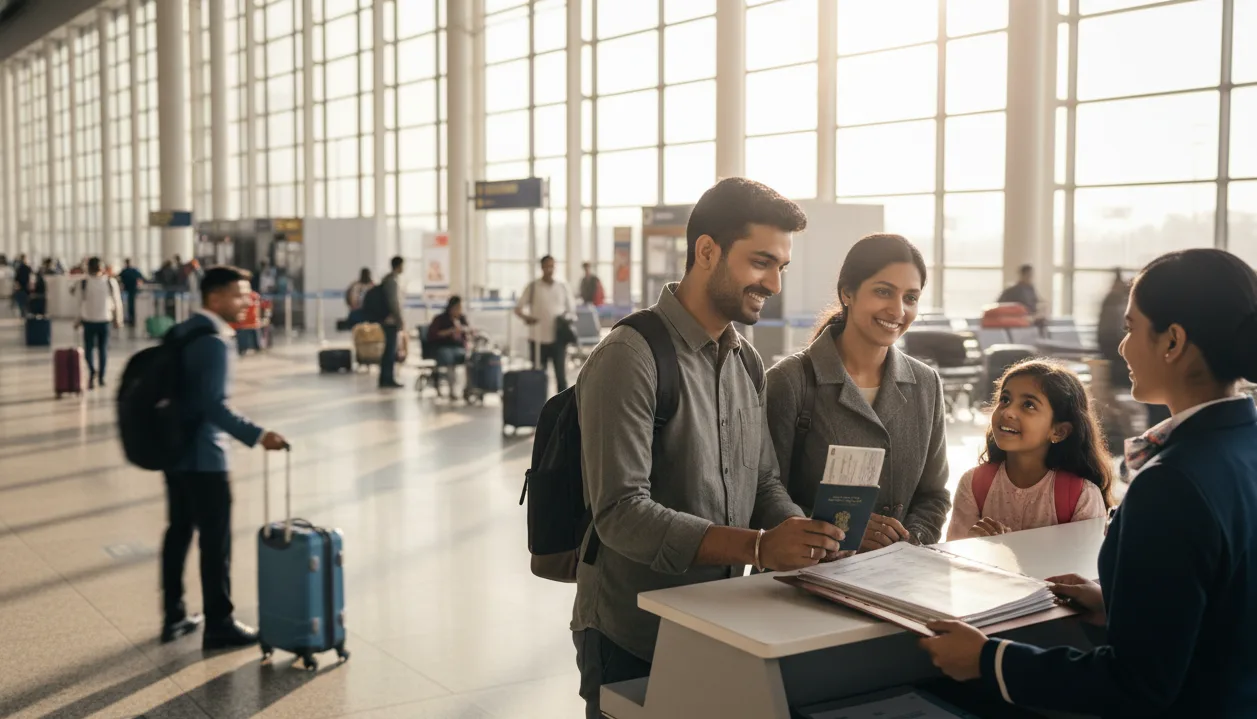
You want clarity, not folklore. Here it is. Consular officers approve visas based on credible plans and non-immigrant intent, not on whether you paid for flights. If your DS-160, story, and documents make sense together, you are already doing the right thing. Need a time-limited hold for your interview? Book a dummy ticket today. For official U.S. visa guidelines, refer to the U.S. Department of State.
What The Officer Really Decides: Credibility Over Receipts
A B-2 decision turns on one question. Are you a genuine temporary visitor who will return to India on time? U.S. law presumes the opposite under INA 214(b). Your job is to show context that overcomes that presumption.
Think in three threads:
-
Your purpose. Tourism, family visit, short business-leisure mix.
-
Your plan. Dates, cities, total length, and who pays.
-
Your ties. Work, studies, family responsibilities, assets, and ongoing commitments in India.
When these threads align, your case looks natural. When they clash, even a fully paid return ticket cannot fix the story.
DS-160 Precision: The First Consistency Check
Treat the DS-160 as your anchor. It sets your timeline and becomes the reference for every question at the window.
Focus on:
-
Dates that match your school or office calendar.
-
U.S. address and contact that match your itinerary.
-
Travel companions listed correctly.
-
Funding details that match your bank statements or sponsor letters.
If you visit multiple cities, show a logical sequence. Mumbai to New York to Washington DC to Orlando back to New York for the flight home reads cleaner than a zigzag that explodes costs. Keep your answers short and consistent. The officer has seconds, not minutes.
Itinerary That Sounds Lived-In, Not Theoretical
You are not required to prepay for flights or hotels. You should still carry a plan you can explain without notes.
Aim for:
-
A clear entry city and a realistic first stop.
-
Sensible day counts. Example: 4 nights New York, 2 nights DC, 2 nights Niagara, 2 spare.
-
Internal travel that matches your budget and time. Trains for the Northeast. One domestic flight crosses coasts.
-
A buffer of 1 to 2 days for delays.
Build around your real-life calendar in India. Students can point to exam timetables and semester dates. Working professionals can match stays to sanctioned leave. Self-employed travelers can show who covers operations while away. Parents traveling with children can align with school breaks.
Money Talks: Align Stay Length With Means
The officer is asking a practical question. Can you comfortably afford what you plan.
Show the answer with:
-
Recent Indian bank statements that reflect regular income.
-
Clean explanations for large deposits.
-
Reasonable daily cost assumptions for the U.S. Think accommodation, food, local transport, and attractions.
Avoid ultra-low daily budgets that do not match American prices. If a relative hosts you, clarify which expenses they cover. If a sponsor pays, show the relationship and why it makes sense. Keep documents simple and readable.
Ties To India: The Story Of Why You Return
Your ties are not a checklist. They are a narrative about your life at home.
Useful proof can include:
-
Employment letters that confirm designation, salary, and approved leave.
-
Business documents, GST filings, or vendor contracts for proprietors.
-
Property documents or long-term leases.
-
Family obligations, caregiving roles, or education plans.
You do not need to carry your entire filing cabinet. Bring what naturally supports your story. Quality beats quantity.
Interview Style: 30 Seconds Of Confidence
You will answer a few questions. That is usually all.
Practice a crisp, human explanation:
-
“Ten days for East Coast sightseeing. New York four, DC two, Niagara two, buffer two. Back in time for the office on the 17th.”
-
“Visiting my sister in California for a family reunion, a total of 12 days, then back for final semester exams.”
Keep the same dates as your DS-160. Use simple language. Look at the officer. Do not hand over documents unless asked.
Why Paying First Can Backfire
Buying nonrefundable tickets to look serious is a bad bet. Plans shift. Appointments move. Currency rates jump. If your visa is refused, you absorb the loss. If your interview date changes, your booking may expire or incur heavy change fees.
More importantly, a prepaid ticket does not solve weak facts. If the itinerary is unrealistic or your funds do not match your plans, a booking receipt will not help. Put your energy into coherence, not into irreversible purchases.
The Red Flags That Sink Credibility
Some mistakes do more harm than good:
-
Altered or mismatched reservations. Names, dates, and routes must be exact.
-
Expired holds are presented as current.
-
Contradictory plans across forms and bank statements.
-
Overstated itineraries that ignore work or study calendars in India.
-
Long, vague stays without a clear end date or return reason.
If the officer senses a patchwork, the presumption under 214(b) stays in place.
Tailoring The Message For Different Travelers
Your approach should reflect your situation.
Students:
-
Keep trips inside semester breaks.
-
Show fee receipts and exam schedules.
-
Explain who funds the trip and why it is affordable.
First-time applicants:
-
Choose a compact, believable route.
-
Keep the total duration conservative for the first visit.
-
Make sure leave and budgets line up.
Family visitors:
-
If attending a wedding or birth, carry the event invite or hospital plan.
-
Keep stays within leave limits or school vacations.
-
Coordinate answers across family members.
Digital nomads and remote workers:
-
Clarify your employer’s remote work policy.
-
Show you will keep your Indian tax and residence base.
-
Keep the stay length reasonable and consistent with U.S. visitor rules.
A paid ticket is not a requirement. It is not even a signal of strength. Your real leverage is a truthful DS-160, a plan that fits your time and money, and ties to India that look like your real life. Prepare those elements carefully. Speak clearly. Keep everything aligned. If you do that, you are presenting exactly what the officer needs to approve a straightforward B-2 tourist visa.
👉 Order your dummy ticket today for a seamless B2 application process.
Your Game Day Plan: Interview Window To U.S. Entry

You have your appointment date and a plan that makes sense. Now it is about execution. The goal is simple. Keep every checkpoint smooth from the consulate window in India to the CBP booth in the United States. Keep your plans flexible and compliant with fast dummy ticket booking.
What To Carry For The Interview: Clean, Compact, Consistent
Go light but go accurate. Officers decide in minutes, so your folder should let you answer fast and stay consistent.
Bring:
-
Passport, appointment confirmation, and DS-160 confirmation with the same spellings and dates.
-
A one-page trip outline. Entry city, internal moves, total duration, and a simple budget note.
-
Proof of funds. Recent Indian bank statements, salary slips, or business income documents.
-
Proof of ties. Leave approval, student status letter, or business ownership basics.
-
If visiting family, a short invitation with contact details and the U.S. address where you will stay.
Label sections with sticky notes. Keep duplicates out. You will hand over only if asked, but having clean papers calms nerves and keeps answers consistent.
Answering With Confidence: Thirty Seconds That Set The Tone
Practice answers that sound like you. Not a script. Short sentences beat long speeches.
Good patterns:
-
“Ten days for sightseeing. New York four. Washington DC two. Niagara two. Two as buffer. Back for office on the 17th.”
-
“Family visit in San Jose for a reunion. Twelve days total. I have leave from the 3rd to the 16th.”
Tie your duration to your reality in India. Mention classes resuming, a project go-live, or year-end closing. Officers listen for real life, not travel slogans.
Documents You Do Not Need To Prepay: Tickets And Hotels
You can attend the interview without a purchased ticket or prepaid hotel. Officers care about coherence, not receipts. What helps is a tentative plan that is believable and dated around your leave.
If you choose to carry a reservation, ensure:
-
Names match the passport.
-
Dates match DS-160 and your spoken answers.
-
The record can be verified during your appointment window.
Avoid screenshots that cannot be checked. Avoid holds that expire before you reach the counter.
Airline Check-In In India: What Staff Usually Verify
Most Indian check-in counters focus on passport validity, visa, and any transit visas for third countries on your route. They do not usually demand a paid return for a U.S. B-2 traveler. Policies can vary by airline, supervisor, or local station, so carry your plan.
Smart tips:
-
Keep your tentative return date visible on your reservation or itinerary printout.
-
If the route passes through a country with onward proof expectations, carry a valid hold that covers that transit rule.
-
Reach early. Clarifying policy is easier when the queue is short.
Transit Pit Stops: When Third Countries Ask For Onward Proof
Many India–U.S. routes pass through hubs like Dubai, Doha, Abu Dhabi, Istanbul, London, Frankfurt, Amsterdam, Paris, Singapore, or Tokyo. Some carriers or transit points have their own rules on onward travel proof for certain nationalities. The U.S. does not require a prepaid return, but the hub may.
Plan ahead:
-
Check airline and airport transit policies for your exact routing.
-
Carry a time-limited, verifiable reservation for the full round trip if your hub is strict.
-
If you switch airports inside a country, confirm visa-free transfer rules. London and some European hubs can be specific about this.
At The U.S. Port Of Entry: How To Make CBP Easy
CBP will ask about your purpose, duration, and address of stay. Officers may also check that your funds and plans are sensible. You do not need to show a paid return. You do need answers that match your DS-160 and what you told the consulate.
Prepare a short card on your phone or in your wallet:
-
First address. Hotel or family address with zip code.
-
Total days and a simple plan summary.
-
A contact number in the United States.
Carry proof of funds access. A bank statement is fine. A credit card or Forex card shows practical access. Keep your answers calm and brief. If questioned about changes, explain the reason and keep the new dates within the same overall window.
Families And Groups: One Timeline, Many Passports
Traveling together is common for Indian families. Coordination matters. Everyone should speak to the same dates and cities. If one person says 12 days and another says 18, the officer will pause.
Good practice:
-
Use one shared day-by-day outline.
-
Keep children’s school schedules handy if traveling during breaks.
-
Divide documents. One adult carries funds and bookings, the other carries school or employment proofs.
First-Timers, Students, And Remote Workers
First-time travelers
-
Keep the itinerary compact. Two or three cities. Clear start and end dates.
-
Choose a duration that fits your leave exactly.
-
Avoid budget claims that do not match U.S. costs.
Students
-
Anchor to semester calendars. Carry fee receipts and exam schedules.
-
If a parent sponsors you, keep bank statements and relation proof clean and simple.
-
Avoid long stays that overlap class time.
Remote workers and digital nomads
-
Bring a short letter on company letterhead confirming remote-work permission for vacation travel.
-
Keep the U.S. stay well within the limits of visitor status. You are a tourist, not working in the U.S.
-
Show that your tax residence and life base remain in India.
Cruise Arrivals, Side Trips To Canada Or Mexico, And Niche Plans
Some itineraries include a Caribbean cruise or a Niagara detour via Canada. These pieces create extra checkpoints. Plan them early.
-
Cruises. Have the booking confirmation or invoice. Keep the embarkation and disembarkation dates aligned with your overall stay length.
-
Canada or Mexico. Check the separate visa needs. Carry proof that you will return to the United States to fly home to India if your round-trip is outside the USA.
-
Rental cars. Carry an Indian driving permit and an international permit if required by the rental company. Align the rental period to your hotel nights.
Proof Of Plans That Ages Well: Keep Everything In Sync
Dates move. Interviews reschedule. That is normal. What matters is that your paper trail stays synchronized.
Before each checkpoint, do a five-minute audit:
-
DS-160 dates, itinerary outline, any reservations, and leave letters show the same window.
-
Bank statements reflect recent salary or business activity.
-
If a reservation expired, renew it or remove it. Do not present stale records.
The Smooth Path In One View
Think of your journey as three checks. The consulate in India, the airline counter at departure, and CBP on arrival. None of these requires a prepaid ticket for a B-2 visa applicant. All of them reward clarity and consistency.
Move with a plan that you can defend in one breath. Keep documents light and current. Align every answer with the story you already put on the DS-160. That is how you glide from window to gate to the U.S. entry stamp without drama.
What Travelers Are Saying
Using Temporary Flight Reservations The Right Way
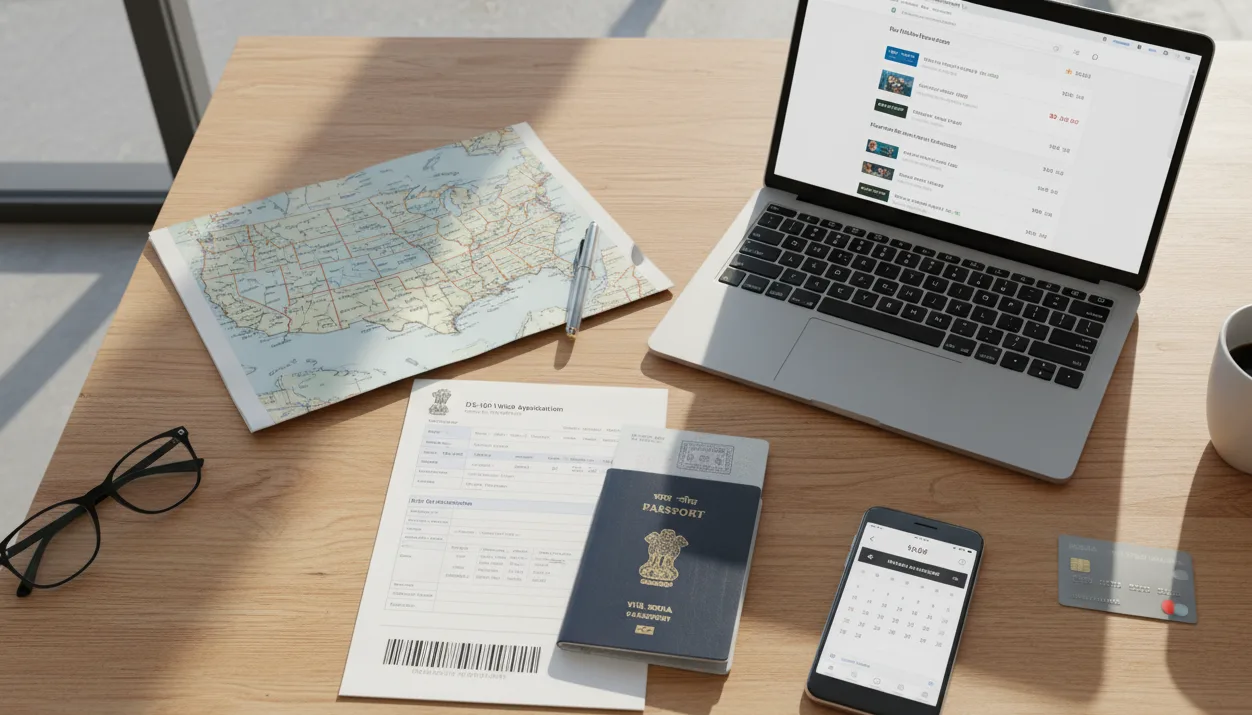
You do not need a paid ticket to win a tourist visa. Still, a clean reservation can make the story easier to present. Use it as a planning tool, not a trophy. Here is how to keep it smart, simple, and safe for an Indian traveler. Show dates that match your DS-160—book a dummy ticket in seconds.
When A Reservation Helps You, Not Hurts You
A temporary booking supports a coherent narrative for a b2 visa under the visitor visa umbrella. It shows dates, cities, and a sensible length of stay without locking your money. It helps you align your visa application with your leave calendar, hotels, and internal transport.
Good uses:
-
Interview clarity. Your one-page plan matches the hold. You can point to dates without guessing.
-
Transit compliance. Some hubs in certain countries want onward proof even though the United States does not.
-
Family travel. Everyone follows the same calendar. No conflicting itineraries at the window.
Do not use a reservation to mask weak facts. It is a mirror. If the plan is unrealistic, the mirror shows it.
The Quality Rules For Holds That Do Not Backfire
Treat a reservation like any other required document. It must fit your file perfectly.
Check:
-
Names match the passport. Spellings and middle names included.
-
Dates line up with your DS-160 and the confirmation page.
-
The record is live and verifiable during the visa appointment and any interview scheduling changes.
-
The route matches your story. No random detours that stretch the budget.
If you include hotels, keep them cancellable. If plans shift, update the reservation before you print. Never submit edited screenshots.
Buying Before Approval. Reduce Risk If You Must
Some travelers want to buy early for pricing or to coordinate with relatives. If you purchase before issuance, protect yourself.
Use fares that are refundable or changeable. Avoid rigid basic options. If you book a non-refundable flight, even with a low-cost airline, know the change rules in writing. Keep the stay length realistic. CBP sets your maximum period at entry. Do not plan beyond it.
Carry proof of funds that fit your timeline. Keep your passport valid well beyond your return date. A valid visa in an expired passport needs the old and the new books together, so think ahead about how you will carry both if your visa expires mid-trip.
Keep Every Piece In Sync With Your Story
A temporary booking only works when the rest of the paper trail agrees.
Sync these:
-
Online visa application dates, hotels, and internal flights or trains.
-
Bank statements that match your budget claims.
-
Leave letters or student schedules that match the itinerary.
-
Final plan after approval. If you change dates, update reservations and lodging so your story stays coherent.
If you are seeking medical treatment, carry letters from the U.S. facility. A teaching hospital or a medical school's hospital will usually write a clear plan for consultation and recovery. Bring financials that show how you will pay. That fits the visa category and avoids confusion about purpose.
What B-2 Covers. And What It Does Not
A reservation should fit the activity you describe. The B class covers nonimmigrant visas for travel to the foreign country of the United States for tourism or short visits. The primary purpose for B-2 can include sightseeing, family visits, and short medical care. It does not allow you to perform services.
Keep these boundaries in mind:
-
B-1 is for short business travel such as business meetings, visiting business associates, or a business convention. B-2 is for leisure and basic visits. Many Indians hold a combined b1 b2 foil.
-
You cannot perform independent research, accept a fee from a paying audience arrival, do ship or aircraft work, or any aircraft work. Those need other categories.
-
The visa waiver program does not apply to Indian citizens. Most countries in South Asia are not eligible. You apply in the standard stream.
-
The electronic visa update system is for travelers from select nationalities. It does not apply to Indian B-1/B-2 holders.
-
Journalists in print journalism or the foreign press use a different category. A B-2 is not correct for media work.
-
A domestic employee traveling with an employer has separate rules. Plan the specific circumstances with counsel if needed.
Your entry is always at the discretion of border protection under homeland security. They confirm entry requirements, check your current status, and decide your temporary stay period on arrival. That is why your plan must read as practical and honest.
Visa Validity, Multiple Entries, And Realistic Calendars
A B foil for Indians is typically a multiple-entry visa with visa validity tied to reciprocity. The officer at the port sets your stay on each entry. Respect that window. Keep the itinerary and reservation within it. Your permanent home and binding ties remain in your home country. That is the logic of non-immigrant status and the United States authorities.
If you will attend events like school graduations, social events, or meet business purposes on the same trip, keep it simple. Separate agendas can confuse intent. Short, well-planned leisure visits are cleaner.
BookForVisa.com: The One Place For A Brief Service Mention
If you decide you need a placeholder, use one that can be checked. A professionally issued hold with a verifiable PNR keeps interviews simple. BookForVisa.com provides instantly delivered reservations designed for consulates, with live verification and unlimited date changes at $15. Use it when a time-limited, checkable plan helps your file. Use it sparingly. It is optional and should match your documents.
Pre-Interview Audit. Five Minutes That Save Stress
Before the window, run a micro-check. It keeps the visa process tidy and your answers crisp.
-
DS-160, itinerary, any holds, and hotels show the same dates.
-
Funds match the plan. No last-minute unexplained deposits.
-
Your folder covers the required documents listed by the Department of State. Carry the MRV receipt and the confirmation page for digital fingerprint scans.
-
If eligible for an interview waiver, follow the package list precisely. If not, arrive early for biometrics and security.
-
Skip noise. Ignore unrelated terms like a visa integrity fee that do not apply to this flow. Stick to the official receipts.
-
Know that a visa issued is permission to approach the border. Final admission sits with border protection at the airport.
If a presidential proclamation or policy shift changes entry requirements, check official pages before you fly. That keeps you aligned with foreign affairs guidance and avoids surprises.
Special Corners Of The Map You Might Wonder About
-
Academic visitors. Observing clinics is different from clinical work. Faculty physicians doing hands-on tasks need the right category. A fourth-year internship or residency is not B-2.
-
Performers. A professional performance needs a work category. Leisure tourism on B-2 is fine; performing for money is not.
-
Government and media. If you represent a mission, there are distinct paths separate from B. Those cover staff who manage information media or official travel. Seek the right channel.
-
Cargo crew. Mariners and crew have dedicated rules. Do not plan to arrive to ship or aircraft work while on a B foil.
A reservation helps only when it mirrors your real plan. Keep it clean. Keep it verifiable. Keep it within your stay window. That is how a simple hold supports a strong file without taking over your journey.
Edge Cases, Smart Planning, And India-Specific Realities
You have the core plan sorted. Now, let us tighten the corners that trip people up. These tips keep unusual routes, shifting dates, and family logistics from derailing a simple B-2 trip. Avoid nonrefundable fares while you prep; choose dummy ticket booking instead.
Multi-City Dreams, Real-World Schedules
Big itineraries look exciting on paper. They also inflate costs and risk.
-
Start with one coast. East Coast for city hopping. West Coast for nature and family visits.
-
Cap a first trip at two or three hubs. For example, New York and Washington DC with Niagara. Or Los Angeles and San Francisco with a national park.
-
Count transfers as half days. Airports eat time. Avoid backtracking that burns money.
-
Add one buffer day per week. Weather and tired kids need it.
-
Keep internal flights flexible or refundable until the visa is in your passport.
If you truly want both coasts, stretch the total days and the budget accordingly. Otherwise the plan looks rushed and expensive.
Peak Season From India: Prices, Holds, And Flex
Summer holidays, Diwali breaks, and Christmas–New Year sell fast. Prices rise and reward seats vanish.
-
Use date ranges in your planning. On DS-160, choose realistic windows that allow movement later.
-
Track fares before your interview. Save a few sample screenshots so your budget chat sounds informed.
-
If you hold a reservation, ensure it stays valid through your appointment week. Renew before it expires.
-
For families, pick morning departures from India. Kids handle daytime travel better and you reduce misconnect risks.
A modest shift of two or three days can change fares by thousands. Keep your plan elastic until the visa is issued.
Visa Timelines Versus Booking Validity
Interview dates can move. So can your work calendar.
-
Separate your VAC and interview files. Keep both sets tidy and aligned on dates.
-
If the interview shifts, update any reservations before you reprint.
-
Keep hotels cancellable. Put the cancellation policies on your checklist.
-
Avoid paying for attractions in advance. Many have flexible windows you can buy later at the same price.
Your goal is a plan that survives a schedule change without penalties or contradictions.
Students, Working Pros, Self-Employed, And Seniors Visiting For Medical Treatment
Different travelers need different proof. Keep it specific and light.
Students
-
Plan within semester breaks. Carry an exam timetable or academic calendar.
-
If parents sponsor, show bank statements that match the travel costs.
-
Keep the trip short if a new term begins soon after.
Working professionals
-
Bring a clean leave letter with dates and return-to-work day.
-
Keep your stay inside the approved leave. If not, update HR before you interview.
-
Skip long itineraries that clash with project deadlines.
Self-employed
-
Prepare a one-page business profile. Include nature of work and who runs operations while you travel.
-
Carry recent GST filings or client invoices to show continuity.
-
Keep travel dates outside peak delivery cycles.
Senior travelers
-
Bring simple medical notes if relevant. Carry regular prescriptions in original packaging.
-
Choose nonstop or single-stop routes that minimize strain.
-
Keep travel insurance dates aligned with your stay plus a small buffer.
Side Trips And Unusual Itineraries
Many Indian travelers add quick detours. Done right, these are easy to explain.
-
Canada via Niagara. If you plan to cross the border, sort Canadian entry rules in advance. Keep your U.S. return flight visible.
-
Mexico from the U.S.. Check e-visa or visa needs. Keep hotel and return plans aligned with your U.S. segment.
-
Caribbean cruises. Carry the cruise confirmation that shows embarkation and return to the U.S. for your flight home.
-
Theme parks and national parks. Book dated tickets only after the visa. Many parks allow changeable reservations.
If a side trip adds paperwork, weigh the joy against the friction. Shorter, cleaner plans read stronger at the window and the border.
Paper Trail That Ages Well
Documents go stale. Keep them fresh and consistent.
-
Reprint the DS-160 confirmation if you corrected any detail.
-
Replace expired holds with fresh ones that mirror your dates. Do not present outdated records.
-
Align hotel confirmations with the same city sequence in your itinerary.
-
Carry the latest bank statements with regular inflows. Explain any large transfers with one sentence and proof if asked.
If you travel as a group, put one shared day-by-day on a single page. Everyone should use it to answer the same way.
Budgeting That Matches Your Story
Numbers should sound plausible for the United States.
-
Set a per-day range that includes lodging, meals, local transport, and one paid activity every few days.
-
Keep cash proofs in Indian rupees and a practical access method for dollars. A Forex card or international credit card works.
-
If staying with family, mention what they cover and what you will cover. Even hosted trips have costs.
-
Avoid ultra-low budgets that do not match real U.S. prices. Officers know the market.
When you sound realistic, you sound prepared. That is what carries weight in short interviews.
When Plans Change After Approval
Changing dates after approval is normal. Do it cleanly.
-
Update hotels and any reservations so the new dates line up.
-
Keep the same purpose and the same length of stay. A small shift is fine. A complete rewrite looks odd.
-
If a family event moves, keep the invite or new schedule handy for airline check-in or questions at arrival.
-
Re-check transit country rules. A new routing may need different documents.
Carry both passports if the visa sits in an older book. Keep them in the same pouch so you do not fumble at boarding or arrival.
Before You Fly
Run a final five-minute audit one week before departure.
-
Itinerary, hotels, and any reservations show a single, consistent window.
-
Bank statements and cards are ready. Limits are known.
-
The first night's address is saved on your phone with the postcode and contact name.
-
Travel insurance covers your stay plus a few days.
-
Everyone in the family can explain the trip in one or two sentences.
These small habits turn a complex plan into a smooth journey. You present a simple, believable story at every checkpoint. That is how you protect your time, your money, and your peace of mind while enjoying a well-earned holiday in the United States.
No Paid Ticket Needed For B2 Visa, Just A Coherent Plan
You do not need a paid flight to secure a U.S. B-2 visa. What wins is coherence. Keep your DS-160 accurate, your itinerary realistic, your funds credible, and your ties to India clear. That is what officers assess under the rules they follow.
On the day, speak simply about dates, cities, and the length of stay. At airline check-in and at U.S. entry, a paid return is not the point. Consistency is.
If you want a placeholder, use a verifiable, time-limited reservation that matches your story. Avoid expired holds or edited screenshots. Update plans if dates move.
Do this, and every checkpoint feels routine. Less stress, fewer surprises, and a smoother start to your U.S. holiday. Travel smarter for transit checks and interviews—book a dummy ticket.

